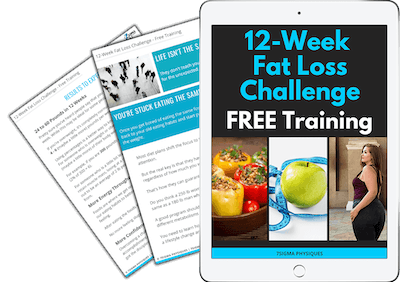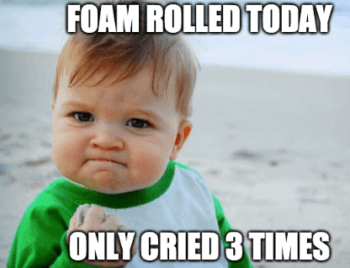I know, I know…
You just took 4 scoops of pre-workout, face is tingling, heart’s beating out of your chest, you got Taylor Swift playing on Spotify, and want to hit the weights before it all wears off.
But what if I told you that warming up before a workout could not only reduce the risk of injury but increase your muscle performance as well?
In this article, I’ll go over the purpose and benefits of a good warm up and an example of what your warm up could look like.
Table of Contents
What’s The Purpose of a Warm Up?
The goals of a warm up are to increase performance during your workout and reduce the risk of injury.
A good warm up accomplishes this by increasing body temperature.
Studies (1) have shown that an increase in body temperature before training can increase oxygen availability, blood flow to the working muscles, and increase the speed and sensitivity in which your nerves and muscles work together to direct, control, and allow movement of your body.
How Long Does It Take To Increase Body Temperature?
This will vary from person to person and will depend on how adapted you’re to cardiovascular activity, the intensity and duration of the activity, and the temperature of your environment. (1)
A good way to measure this is by how much you’re sweating. Typically, light to mild sweating should be enough. (2)
For example, I’m typically warmed up after 5-7 minutes in the stair master, however, the more cardio I do and the leaner I get, the more time it takes me to break a sweat.
A study (3) showed that a 15-minute low intensity warm up was better at improving strength in a 1RM in the leg press than a 5-minute warm up.
Start your journey to losing 24-60 pounds in just 12 weeks.
Get the free 12-Week Fat Loss Challenge Training Guide!

Does Static Stretching Reduce Performance?
Static stretching before training sounds counterproductive, why would we want to elongate and relax a muscle that will be contracted during training a few minutes later?
Studies (4) have shown that stretching to the point where flexibility is extremely increased before training can decrease muscular performance.
Who May Benefit From Static Stretching?
If your muscles are so tight that they hinder your form and prevent you from going through the full range of motion, you may benefit from static stretching.
For example, someone who starts tilting forward during squats or does a “stripper squat” or “butt wink” could be doing this because of poor ankle mobility due to tight calves.
In this case, doing some calf stretches, like the runner’s stretch, seated calf stretch, or towel calf stretch could be beneficial.
This, however, only applies to the muscles you’re training.
Therefore, you shouldn’t have problems if you need to stretch a muscle that’s not being trained directly but still affects your mobility, like tight pecs during squats.
I know that if I don’t stretch my pecs or warm up my shoulders before squats, getting the bar into position becomes very uncomfortable.
Foam Rolling and Muscle Performance

A systematic review (5) showed that foam rolling may help increase joint range of motion for a short period without decreasing muscle performance.
Explore More: How Much Rest Between Sets for Muscle Growth?
What Should Your Warm Up Be?
A thorough warm up should consist of a low-intensity aerobic activity followed by full-body dynamic movements that go through full range of motion, and end with a movement-specific warm up.
Part 1. Low-Intensity Aerobic Activity
The main purpose of this is to increase body temperature, however, some people might find that a dynamic warm up is enough for them to break a sweat, if that’s your case, you could simply skip this part.
This low-intensity aerobic activity can be just a few minutes in the treadmill, elliptical, or spin bike.
Part 2. Dynamic Warm Up
Studies (6) have shown that a dynamic warm up can increase muscle performance as compared to static stretching.
An example of a dynamic warm up would be:
- 15 Step Throughs
- 15 Hip Circles
- 15 Arm Circles
- 15 front and back leg swings
- 15 side to side leg swings
Part 3. Movement-Specific Warm Up
After your dynamic warm up, you should add a movement-specific warm up. This will be based on the first exercise (and it’s rep range) you have scheduled for the day.
For Exercises Under 7 Reps
- 1st set: 5 reps at 50% of your working weight.
- 2nd set: 3 reps at 70% of your working weight.
- 3rd set: 1 rep at 90% of your working weight.
For Exercises With 7 or More Reps
- 1st set: 8 reps at 50% of working weight.
- 2nd set: 6 reps at 70% of working weight.
- 3rd set: 4 reps at 90% of working weight.
Working weight is the weight that you would do during a normal set if you were to skip the warm up.
Let’s take two examples.
Example 1:
Let’s say your first exercise is 3 sets of squats for 4-6 reps and you normally squat 200 lb at that rep range.
Your exercise-specific warm up would look like this:
- 1st set: 5 reps of squats at 100 lb (50% of 200)
- 2nd set: 3 reps of squats at 140 lb (70% of 200)
- 3rd set: 1 rep of squats at 180 lb (90% of 200)
Example 2:
Now let’s say your first exercise is again 3 sets of squats but this time for 10-12 reps instead of 4-6.
Since you’re doing more reps, your working weight will most likely be lighter. Let’s say you can only squat 150 lb at this rep range.
Your exercise-specific warm up would look like this:
- 1st set: 8 reps of squats at 75 lb (50% of 150)
- 2nd set: 6 reps of squats at 105 lb (70% of 150)
- 3rd set: 4 rep of squats at 135 lb (70% of 150)
I sincerely hope you loved this article on why and how to warm up before a workout!
If you’re ready to start your weight loss journey, the 12-Week Fat Loss Challenge is the place to start!

This plan helps men and women lose fat without starving themselves or giving up their favorite foods.


